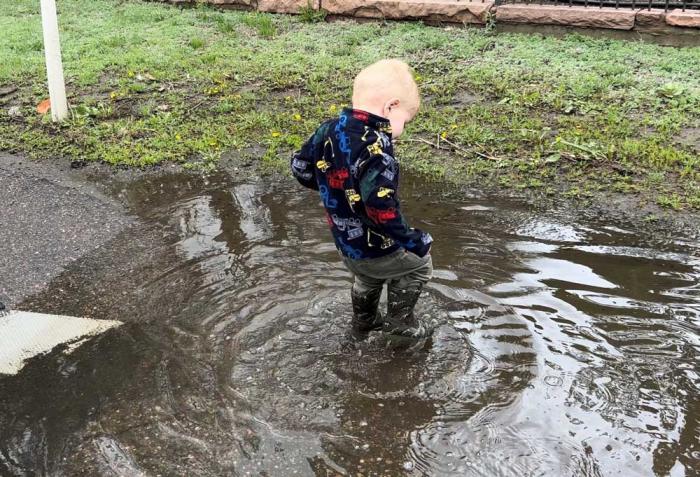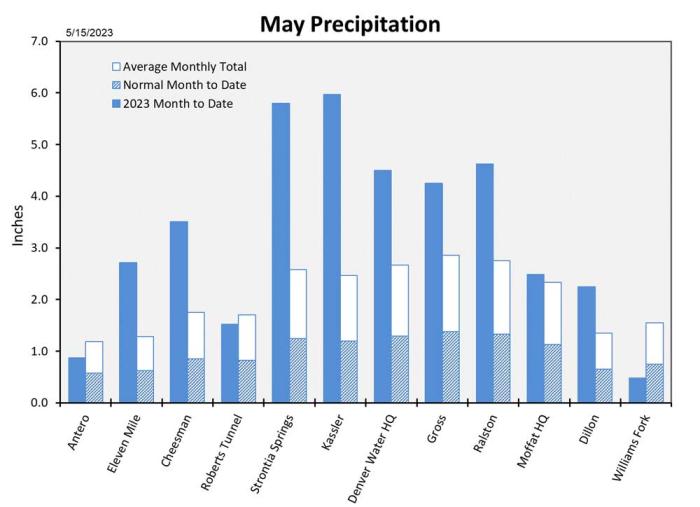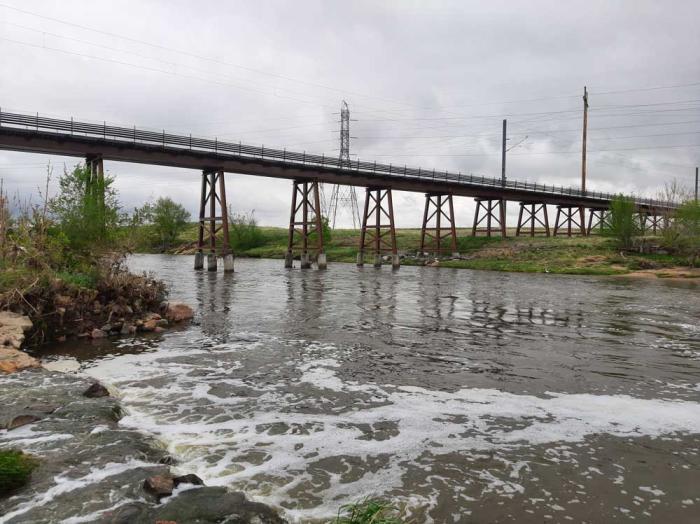How much rain? (Enough for many, many puddles.)
May is shaping up to be a wet month here in Denver. A very, very wet month.
It’s great sleeping weather, so give your sprinkler system a rest. No need to give your yard extra water for a week or more. (And there’s more rain in this week’s forecast!)
“We can enjoy the bounty this storm brought us, but that doesn’t mean we can be careless about water use," said Nathan Elder, manager of water supply for Denver Water.
"We always need to think about keeping our reservoir levels high for the dry periods that are sure to come. So, turn off the sprinklers for several days, follow the summer watering rules and make plans to swap out thirsty turf grass for water-wise plants and trees.”
A quick look at what last week’s storms brought us:
- About 30% of Denver’s annual rainfall. (Denver International Airport averages 14.48 inches of precipitation every year. Wednesday through Sunday, the airport received 4.12 inches.)
- The eighth-wettest day in Denver’s history was last Thursday, according to the National Weather Service.
- A drop in water demand from Denver Water customers, indicating that sprinklers systems have been turned off. Average mid-May water demand for Denver Water is about 208 million gallons per day. This year, it’s about 136 million gallons per day, or 35% below average. (YES! More of this! Keep those sprinklers off!)
- A gain of nearly 13,000 acre feet of water in Denver Water storage reservoirs Wednesday through Monday morning. That’s enough water to supply about 52,000 Denver Water households for a year. (Without the storm, Denver Water expected to gain about 2,500 acre feet of water in the same time period.)
- Chatfield Reservoir has the most water in it since the wet spring of 2015 — and that water can be kept in the reservoir (for later use) due to the work done in recent years to allow extra water to be stored in Chatfield for partner water providers.
- SNOTEL monitoring stations in the Denver Water portions of the Colorado and South Platte river basins picked up 1.5 inches of snow-water equivalent, called SWE. That’s a lot for so late in the season.
- For the first time in more than three years, since April 2020, there’s enough water in the South Platte River to satisfy all water users — a situation that could last more than a week. (Water geeks will tell you the South Platte is running as a “free river,” meaning those with older, more senior water rights are not “calling”’ for water to be delivered to them.)
“With more rain on the way, there is no need to run sprinkler systems. Our yards will benefit from this additional moisture,” Elder said.
“And we can see from the demand numbers, which are low for this time of year, that our customers have turned off their sprinklers in response to the rain. That’s great to see! Keep it going!”




